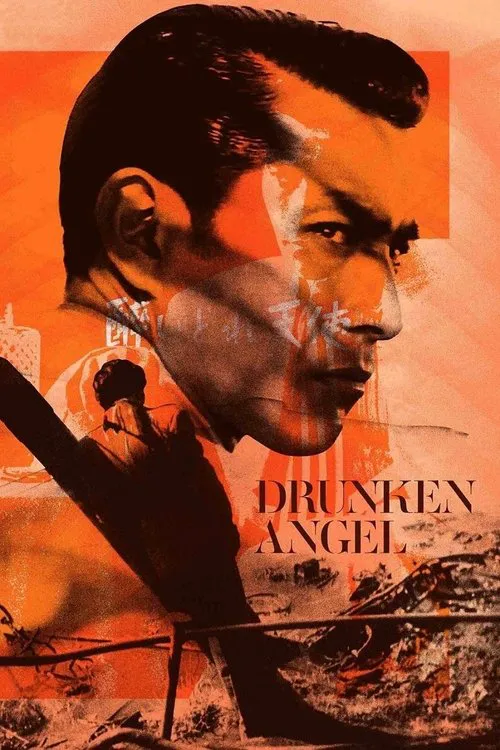Drunken Angel

Plot
In the midst of war-torn Japan in the early 1940s, a poignant and intense drama unfolds in Akira Kurosawa's 1948 classic, Drunken Angel. Set against the backdrop of a decaying society, the film tells the story of a doctor who befriends a gangster, leading to a complex exploration of human relationships and the consequences of choices. The narrative begins with a scene of violence and chaos as Matsunaga, a notorious gangster, engages in a fierce gunfight with rival gang members. Wounded and battered, Matsunaga manages to stumble into the makeshift clinic of Dr. Sanada, a compassionate and dedicated physician who lives among the slums. Sanada takes Matsunaga in, and as the young doctor tends to his wounds, the two begin an unlikely friendship. As Matsunaga's condition worsens, Sanada discovers that he is suffering from tuberculosis, a disease that is both fatal and highly contagious. Given Matsunaga's lifestyle as a gangster, the doctor realizes that the consequences of not treating the disease would be disastrous. Sanada tries to reason with Matsunaga, pleading with him to stay at the clinic for treatment, which would require him to leave his old life behind. This decision would drastically change Matsunaga's circumstances, but the doctor is confident that it would also save his life. Matsunaga, however, is reluctant to give up his old ways. His involvement in the gangster world provides him with a sense of belonging and status, and he is unwilling to sacrifice these for the sake of his health. The doctor, aware of Matsunaga's predicament, attempts to persuade him further by highlighting the benefits of a normal life, free from the violence and danger of his occupation. Despite their differences, the two men form a strong bond, with Sanada acting as a father figure to Matsunaga. This friendship is built on a foundation of mutual respect and understanding, with the doctor trying to reach out to the gangster's softer side. However, their relationship is also complicated, as Matsunaga's old boss, Okada, returns from prison, casting a shadow over their newfound friendship. As the story unfolds, Okada's presence becomes increasingly menacing, threatening to disrupt the fragile peace that Sanada and Matsunaga have established. Matsunaga is torn between his loyalty to his boss and his growing attachment to the doctor, who has shown him a new path in life. In a series of tense and emotionally charged confrontations, Matsunaga is forced to make choices that will determine his future and the nature of his relationship with Sanada. One of the most striking aspects of Drunken Angel is its portrayal of the decaying society of post-invasion Japan. Kurosawa's cinematography is bleak and gritty, capturing the despair and desperation that permeate the slums. The film's black-and-white visuals add to the sense of hopelessness, while the use of shadows and light creates a stark contrast between the dark world of the gangsters and the doctor's isolated clinic. Through the complex and often fraught relationship between Sanada and Matsunaga, Kurosawa explores themes of redemption, loyalty, and the human condition. The film raises questions about the nature of choices and the consequences of our actions, highlighting the difficulties of changing one's circumstances and the importance of human connection in the face of adversity. Ultimately, Drunken Angel is a powerful and haunting film that explores the complexities of human relationships in a time of war and social upheaval. With its intense drama, poignant characters, and thought-provoking themes, it is a timeless classic that continues to resonate with audiences today.
Reviews
Recommendations




